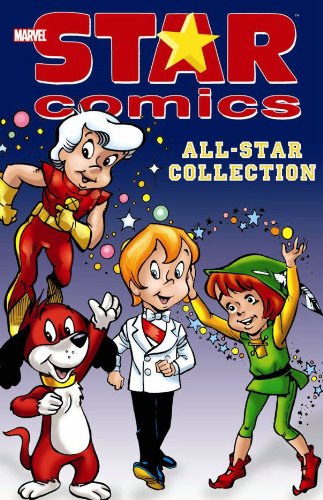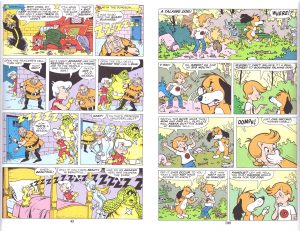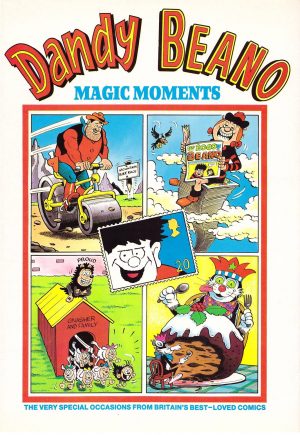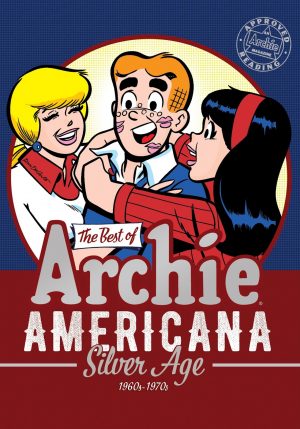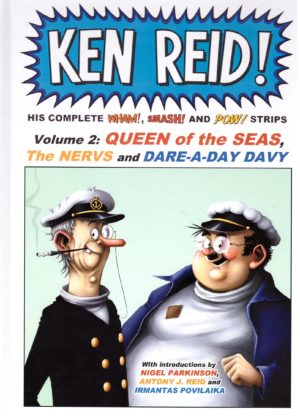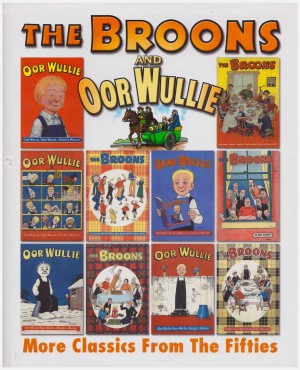Review by Frank Plowright
In the early 1980s Marvel tried to buy the ailing Harvey Comics, who had at least two viable properties in Casper, the Friendly Ghost and Richie Rich. Harvey creators produced runs of new features as samples, but the deal was never completed, and in 1982 Harvey stopped publishing comics. Two years later, Marvel introduced the Star Comics line aimed at young readers, partially to publish the languishing features, Planet Terry, Royal Roy, Top Dog and Wally the Wizard. In 2009 and 2010, rather than collecting individual strips, Marvel issued three All-Star Collections, each presenting two stories about each character. Complete runs of Planet Terry and Top Dog were published ten years later.
Warren Kremer working from Lennie Herman’s scripts accounts for around two-thirds of this collection, and they’re still delightful all-ages stories. The jokes are creative, the characters appealing, and Kremer is a master cartoon storyteller.
Planet Terry is the star turn and leads off each collection. He’s a naive, but likeable kid flying his spaceship around the universe in search of his parents, following clue to clue. We start with a pastiche of Superman’s infancy as per the sample page, the jokes keep coming and the charm level is high, with a new theme introduced for each of the story’s four chapters. Kremer’s alien designs are funny, and by the end of the first story Terry has gathered a useful set of allies. A second story about prophecies is also a lot of fun, but this selection ends on a cliffhanger.
Although then not publishing, Harvey took legal action over Royal Roy, feeling the similarities to Richie Rich were too obvious when it came to the alliterative Prince of Cashelot, and they had a point. Herman and Kremer give Roy eccentric staff, and a toothless crocodile pet, while keeping the jokes coming over the opener and a short about military life. Stan Kaye writes the middle strip about keeping Lorna Loot happy at the grand ball, which doesn’t have quite the same gag rate.
Top Dog is the only feature allocated three stories. There’s no explantation as to why he’s a talking dog capable of walking on two legs, but finding life easier if her blends in on four, but it’s a gag strip that largely succeeds. Herman and Kremer are again the creative team, with Kremer’s way of drawing nasty kids standing out.
Bob Bolling establishes Wally the Wizard, apprentice to Marlin, older brother of the better known Merlin, and it’s only halfway through the first story that it’s apparent how professionally Bolling has introduced a large number of characters and defined them. Over the first ten pages he’s created enough to see the nice, but bumbling Wally through any number of adventures. For all the charm, the plot’s predictable, though. Sid Jacobson and Howard Post produce the funnier second story of Wally entering the Magic-athon.
By today’s standards these stories hardly portray an inclusive society, but the same could be said about almost all pre-21st century comics. What they do achieve is a high standard of entertainment, and it’s likely young children will enjoy them as much now as those of the 1980s did. A second volume published in 2010 catches up with all the characters.
